GERMAN JETS INFLICTED SEVERE DAMAGE TO OUR BOMBERS IN WWII
With their speed of more than 200 MPH faster our losses were unacceptable
Page 2 of 2

HE-162 SALAMANDER
HEINKEL HE-162
The HE-162 was a single engine jet powered fighter aircraft. To build it quickly it was constructed primarily of wood as metals were in short supply. 170 were built for the Luftwaffe. The aircraft at that time was one of the fasted jets with a speed of 562 mph.
Only eight survive at museums. It carried 2 20mm MG-151 cannons and 2 MK-108 30mm cannons.
 :
:
HENSCHEL HS-132
HS-132
The HS-132 was a WWII dive bomber and interceptor for the Luftwaffe that never saw service. The basic model carried one 500kg bomb, reached a speed of 565 mph. It was stressed for a 12g pullout, with the pilot in the prone position. The aircraft was operative but Russian forces captured the production facility.
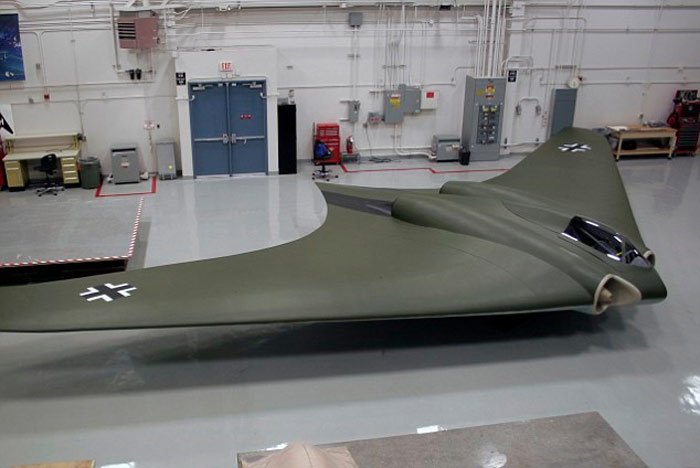
HORTON HO 229 REPLICA OF ACTUAL FLYING AC

HORTON HO 229 RESTORATION AT SMITHSONIAN
HORTON HO-229
The HO-229 was a late WWII prototype flying wing fighter bomber, powered by a turbojet. Perhaps the first aircraft to use stealth technology. Estimated speed was 636 mph, with an estimated ceiling of 49,213 feet. First flight was march 1, 1944. German production was underway, and a simulated "dog fight" with a ME 262 showed the HO-229 outperformed the ME-262. The only surviving HO-229, the V3, is being restored at the Smithsonian facility. Five completed aircraft found by U.S. soldiers were destroyed to prevent capture by the Russians.
PISTON ENGINED AIRCRAFT OF INTEREST
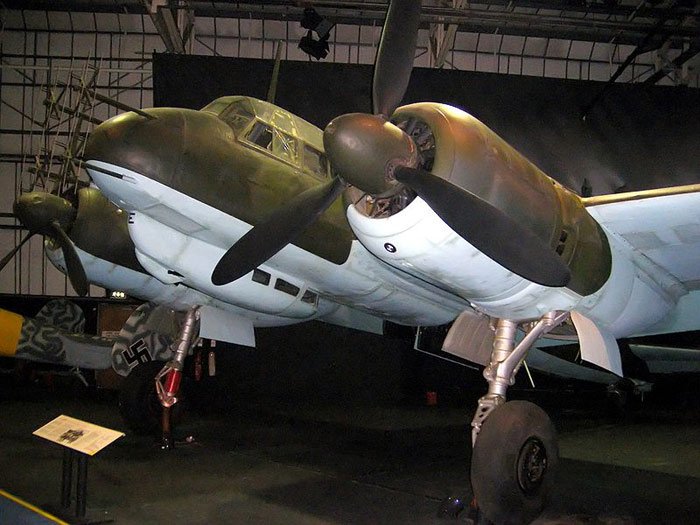
JUNKERS JU-88 BOMBER
JUNKERS JU-88 BOMBER
The JU-88 was a twin engine , multi-role aircraft, and became one of the most versatile combat aircraft of the war. It was successful as a bomber, dive bomber, night fighter, torpedo bomber, reconnaissance aircraft, and heavy fighter. More than 15,000 were built.
Speed was reported at 280 mph.
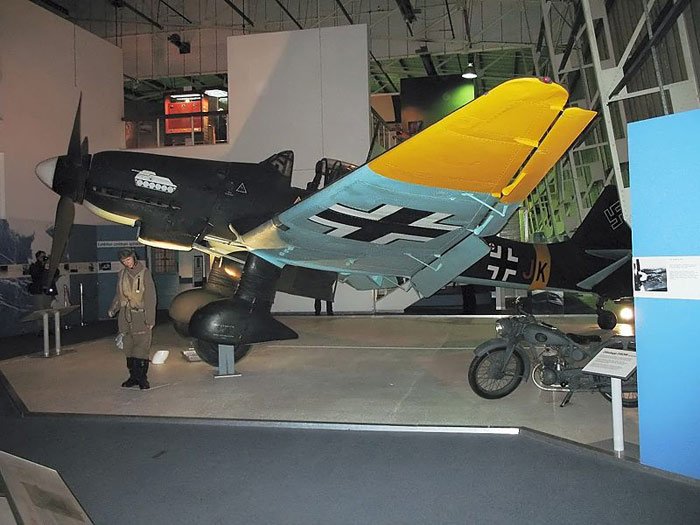
STUKA JU-87 DIVE BOMBER
STUKA JU-87 DIVE BOMBER
The Stuka was a two seat dive bomber carrying a rear gunner, first flown in1935. Over 6,500 were built. It actually was an easy target for Allied aircraft. It was powered by the British Rolls-Royce power-plant. Speed was a surprisingly slow 211 mph, however the dive speed was 373. The pilots of the Stuka had to be hand picked as the tremendous G-forces in pullout required a special capability. The stress on the crew was severe. Pilots in a seated position suffered more than 5 Gs which caused vision impairment. After 5 seconds it would result in blackout. Test show the highest load a pilot could endure was 8.5 Gs for 3 seconds when the aircraft was pushed to the limit.
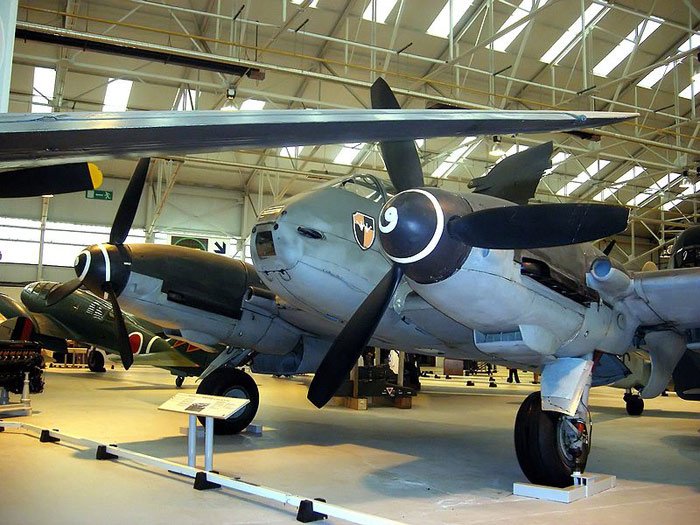
ME-410 A-1
ME-410 A-1
The Me-410 A-1 was a two man night fighter. It had formidable fire power with two additional 20mm cannons in the weapons bay, and four underwing tubes firing 21cm mortar rockets. Many carried the 50mm cannon. With a speed of 388 mph it had an excellent range of 1,400 miles. Over 1,200 were built. At the time it had problems, as all German planes had, with swarms of P-47s and P-51s.
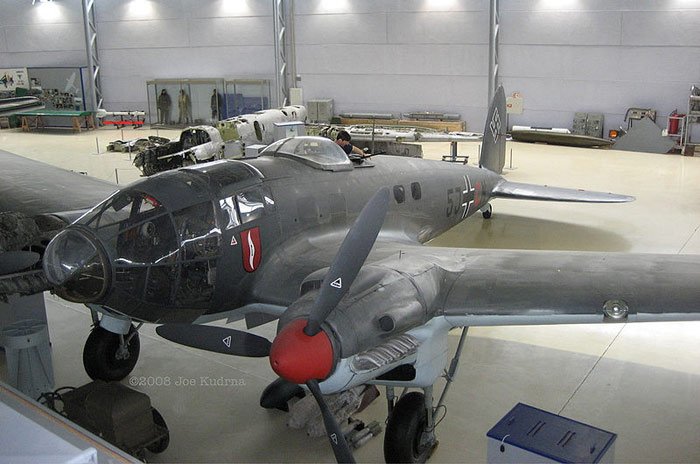
HEINKEL-111P
HEINKEL-111P
The Heinkel-111P had arange of 1429 miles, a speed of 273 mph. It was a fast medium bomber. 6,508 were built, with the first flight in 1935
AIR WAR WITH THE U.S. FINISHED THE GERMAN AF
It is somewhat frightening to analyze the formidable array of all the exotic German aircraft. How could our planes compete with the German planes sometimes 200mph faster than ours. Due to Hitlers interference and lack of military intelligence slowed the development of many critical projects. His invasion of Russia was the final blow.
Now comes the B-17s and B-24s by the thousands. Many hundreds every day dropped thousands of tons of bombs on the factories producing these aircraft. Every German city was virtually destroyed. Don’t forget the British effort .When the Russians entered Germany the onslaught was complete. Without their production capabilities the war was over. If they had produced this vast array of equipment earlier the war might have been a little different, however the outcome would have been the same. I give credit to the B-17 and the B-24 for knocking out the German factories producing these planes. They have been beautifully restored and make nice museum pieces.

B-17E FLYING FORTRESS
B-17E FLYING FORTRESS
The B-17 began operations with the RAF in 1941. They dropped more bombs than any other aircraft in WWII. Of the 1.5 million tons of bombs dropped on Germany by U.S. aircraft 640,000 tons were dropped from B-17s. On their very first raid 17 Aug. 1943, 230 B-17s were intercepted by 300 Luftwaffe fighters. 36 B-17s were shot down with the loss of 200 men. Coupled with a raid earlier in the day, 60 B-17s were lost in one day.
On 14 Oct. 1943, which would become known as "Black Thursday", of the 291 B-17s involved in a raid 59 were shot down. Combined with battle damage, and crash landings, a total of 77 were shot down and 122 damaged. Of the 2,900 men in the crews, 650 did not return. Of the damaged aircraft that made it home five men were killed, 43 wounded, and 594 missing action. Only 33 aircraft of the original 291 only 33 returned without damage. Heavy losses were contributed to concentrated attacks by over 300 German fighters. The 8th AF alone lost 176 bombers in the month of Oct. 1943.On 11 Jan. 1944, 60 B-17s were destroyed. Perhaps the most famous B-17, the Memphis Belle, is being restored to it’s wartime appearance at the National Museum of the USAF in Dayton ,Ohio. Over 12,731 B-17s were built by Boeing.

B-24 BOMBER
B-24 BOMBER
The B-24 was produced by Consolidated, and 18,188 "Liberators" were made. The Willow Run plant in Detroit, Michigan employed 42,000 workers who produced 8,600 Liberators. Typical mission losses: 178 B-24s took off from Benghazi. 16 aborted or crashed, 162 reached targets around Ploesti. 51 were shot down, 22 had to land at various Allied bases. 89 of the 162 returned to Benghazi with 58 damaged beyond repair
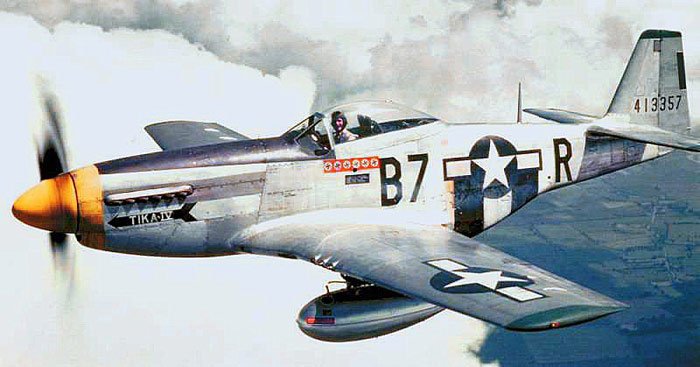
P-51 MUSTANG
P-51 MUSTANG
The North American Aviation P-51 was a long range fighter, designed, built, and flying in 117 days. It was used as a bomber escort in WWII. It remained in service until the early 80s. The Mustang was fast, well made, and highly durable. It was powered by a Packard V-1650, with a two-stage two speed supercharged engine, and armed with six 50 caliber machine guns. The P-51, using the new V-1650-9 engine made it one of the fastest propeller fighters ever, at 487 mph, with an altitude of 40,000 feet, and a range of 1300 miles. Later Mustangs used different engines and modified bodies. Over 14,819 were built for the Army. 2,520 were lost. Our bombers were suffering unacceptable losses as we went further into Germany. They badly needed long range escorts, and the P-51 solved the problem.
The Americans won the war with Germany and Japan, but at a terrible price. We lost thousands of our best men all because the two countries decided to take over the world. WWI was the "war to end all wars." Then what was WWII? Are we ready for it to happen again? The truth is that we are not anywhere near ready. We have grown very complacent.
Perhaps it is time we elect people who will not let this happen again.
I happened to be in Luxembourg and wanted to visit the military cemetery and pay my respects to General George Patton. The cemetery is huge, and beautiful. As I stood next to Patton’s grave, I looked at the thousands of white crosses. The air was so thick I could hardly breathe. The very sight of what those crosses meant really choked me up. Each individual grave holding one of America’s finest, to remain the same age forever. I cannot accept that WWII was worth losing even one man. Nor was Korea or Vietnam.
GERMAN LOSSES
The German Army, reported at 18 million soldiers served in WWII. About one million served as SS troops. About 1.3 million Wehrmacht soldiers were killed in action. Two million were missing in action and unaccounted for after the war. A total of 5,533,000 German soldiers were killed or missing in action in WWII. The number of wounded surpassed 6,000,000, and the number of prisoners unknown but in the millions.
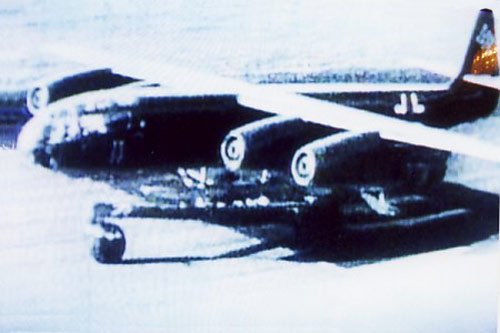
ARADO 234 C-2
ARADO 234 C-2
As a pilot, aircraft enthusiast, collector of aircraft photos, I have never seen a photo of a C-2 with four individual engine nacelles. Yes, this photo is pretty bad, but I took it from a German movie film strip featuring the roll out of this plane. I have never seen a photo of the supposedly Arado 234 C-2.
Research by Website Historian Wayland Mayo